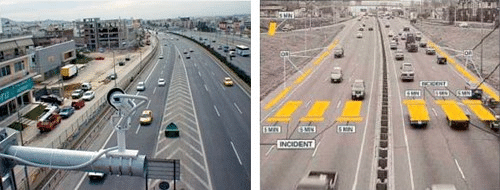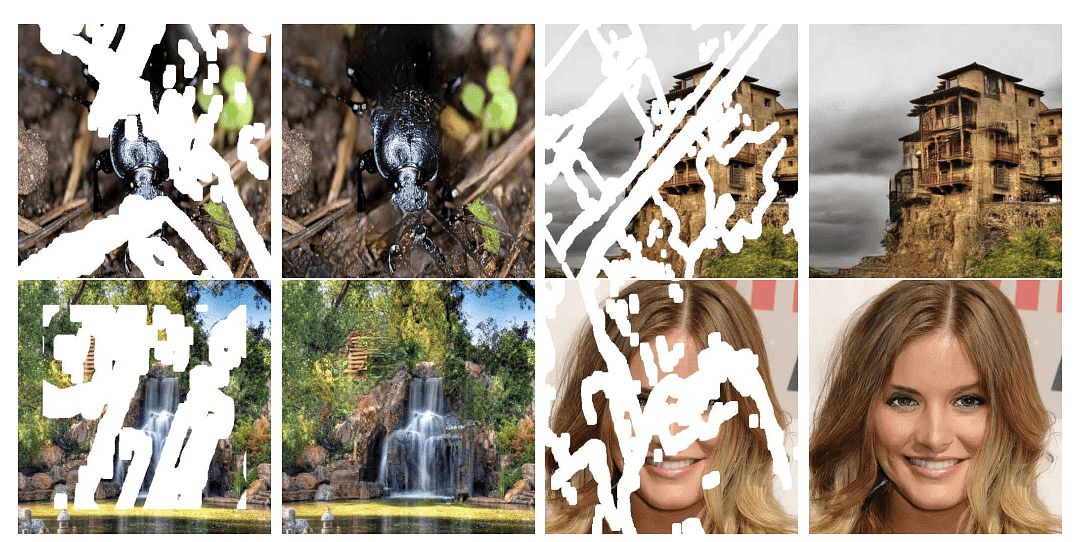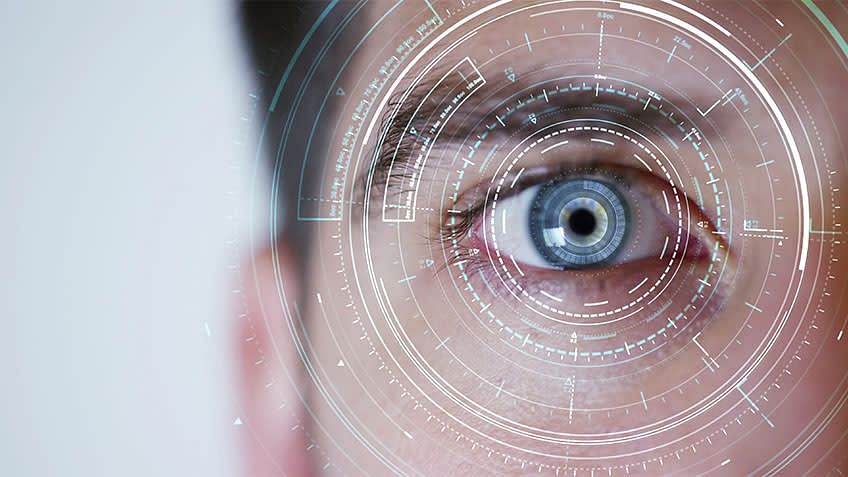Deep learning has had a tremendous impact on various fields of technology in the last few years. One of the hottest topics buzzing in this industry is computer vision, the ability for computers to understand images and videos on their own. Self-driving cars, biometrics and facial recognition all rely on computer vision to work. At the core of computer vision is image processing.
What Is an Image?
Before we jump into image processing, we need to first understand what exactly constitutes an image. An image is represented by its dimensions (height and width) based on the number of pixels. For example, if the dimensions of an image are 500 x 400 (width x height), the total number of pixels in the image is 200000.
This pixel is a point on the image that takes on a specific shade, opacity or color. It is usually represented in one of the following:
- Grayscale - A pixel is an integer with a value between 0 to 255 (0 is completely black and 255 is completely white).
- RGB - A pixel is made up of 3 integers between 0 to 255 (the integers represent the intensity of red, green, and blue).
- RGBA - It is an extension of RGB with an added alpha field, which represents the opacity of the image.
Image processing requires fixed sequences of operations that are performed at each pixel of an image. The image processor performs the first sequence of operations on the image, pixel by pixel. Once this is fully done, it will begin to perform the second operation, and so on. The output value of these operations can be computed at any pixel of the image.
What Is Image Processing?
Image processing is the process of transforming an image into a digital form and performing certain operations to get some useful information from it. The image processing system usually treats all images as 2D signals when applying certain predetermined signal processing methods.
Types of Image Processing
There are five main types of image processing:
- Visualization - Find objects that are not visible in the image
- Recognition - Distinguish or detect objects in the image
- Sharpening and restoration - Create an enhanced image from the original image
- Pattern recognition - Measure the various patterns around the objects in the image
- Retrieval - Browse and search images from a large database of digital images that are similar to the original image
Components of Image Processing
Computer
A general-purpose computer, which may be anything from a PC to a supercomputer, is used in an image processing system. Sometimes, specifically built computers are utilized in specialized applications to reach a specified degree of performance.
Hardware for Specialized Image Processing
It comprises the digitizer and hardware that can carry out basic operations, including an Arithmetic Logic Unit (ALU), which can carry out simultaneous arithmetic and logical operations on whole pictures.
Massive Storing
In applications involving image processing, the skill is essential. The three main types of digital storage for image processing applications are as follows: Three types of storage exist (1) short-term storage, (2) online storage for quick recall (3) archive storage, which is characterized by rare access.
Camera Sensors
It alludes to perception. The image sensor's primary function is to collect incoming light, transform it into an electrical signal, measure that signal, and then output it to supporting electronics. It consists of a two-dimensional array of light-sensitive components that convert photons into electrons. Images are captured by equipment like digital cameras using image sensors like CCD and CMOS. Two components are often needed on image sensors to collect digital pictures. The first is an actual tool (sensor) that can detect the energy emitted by the object we want to turn into an image. The second is a digitizer, which transforms a physical sensing device's output into digital form.
Image Display
The pictures are shown.
Software
The image processing software comprises specialized modules that carry out particular functions.
Hardcopy Equipment
Laser printers, film cameras, heat-sensitive equipment, inkjet printers, and digital equipment like optical and CDROM discs are just a few examples of the instruments used to record pictures.
Networking
To send visual data through a networked computer, it is a necessary component. The most important factor in picture transmission is bandwidth since image processing applications require vast amounts of data.
Fundamental Image Processing Steps
Image Acquisition
Image acquisition is the first step in image processing. This step is also known as preprocessing in image processing. It involves retrieving the image from a source, usually a hardware-based source.
Image Enhancement
Image enhancement is the process of bringing out and highlighting certain features of interest in an image that has been obscured. This can involve changing the brightness, contrast, etc.
Image Restoration
Image restoration is the process of improving the appearance of an image. However, unlike image enhancement, image restoration is done using certain mathematical or probabilistic models.
Color Image Processing
Color image processing includes a number of color modeling techniques in a digital domain. This step has gained prominence due to the significant use of digital images over the internet.
Wavelets and Multiresolution Processing
Wavelets are used to represent images in various degrees of resolution. The images are subdivided into wavelets or smaller regions for data compression and for pyramidal representation.
Compression
Compression is a process used to reduce the storage required to save an image or the bandwidth required to transmit it. This is done particularly when the image is for use on the Internet.
Morphological Processing
Morphological processing is a set of processing operations for morphing images based on their shapes.
Segmentation
Segmentation is one of the most difficult steps of image processing. It involves partitioning an image into its constituent parts or objects.
Representation and Description
After an image is segmented into regions in the segmentation process, each region is represented and described in a form suitable for further computer processing. Representation deals with the image’s characteristics and regional properties. Description deals with extracting quantitative information that helps differentiate one class of objects from the other.
Recognition
Recognition assigns a label to an object based on its description.
Blind Deconvolution in Image Processing
Blind image deconvolution is the challenge of recovering a clear picture from a blurry and noisy one without knowing precisely how the image was blurred, as obtained by an ideal pinhole camera. The unidentified blurring operation might be brought on by defocus, camera movement, scene motion, or other optical defects. A trade-off between exposure duration and aperture setting is necessary for proper photography exposure. The photographer might utilize a big aperture or a lengthy exposure period when the lighting is bad. The first option produces motion blur when the camera moves concerning objects in the scene while the exposure takes place. When using the second option, things farther from the focal plane become out-of-focus blurred. This may lead to blind deconvolution in image processing.
Importance of Phase in Image Processing
Phase, in a nutshell, contains information about the positions of features. Phase-only and magnitude-only photos cannot be combined to produce the original. To obtain the original, multiply them in the Fourier domain and reverse the transformation. A repeated waveform's phase describes the position or timing of a particular point within a wave cycle. Instead of the actual absolute phases of the signals, the phase difference between waves usually matters.
Ringing Effect in Image Processing
The unpleasant ringing effect often referred to as the Gibbs phenomenon in mathematical approaches to image processing, is an artifact that appears as rippling ripples close to sharp edges in photos and videos. The loss or distortion of high-frequency information in the image results in this effect.
Applications of Image Processing
Medical Image Retrieval
Image processing has been extensively used in medical research and has enabled more efficient and accurate treatment plans. For example, it can be used for the early detection of breast cancer using a sophisticated nodule detection algorithm in breast scans. Since medical usage calls for highly trained image processors, these applications require significant implementation and evaluation before they can be accepted for use.
Traffic Sensing Technologies
In the case of traffic sensors, we use a video image processing system or VIPS. This consists of a) an image capturing system b) a telecommunication system and c) an image processing system. When capturing video, a VIPS has several detection zones which output an “on” signal whenever a vehicle enters the zone, and then output an “off” signal whenever the vehicle exits the detection zone. These detection zones can be set up for multiple lanes and can be used to sense the traffic in a particular station.

Left - normal traffic image | Right - a VIPS image with detection zones (source)
Besides this, it can auto record the license plate of the vehicle, distinguish the type of vehicle, monitor the speed of the driver on the highway and lots more.
Image Reconstruction
Image processing can be used to recover and fill in the missing or corrupt parts of an image. This involves using image processing systems that have been trained extensively with existing photo datasets to create newer versions of old and damaged photos.

Fig: Reconstructing damaged images using image processing (source)
Face Detection
One of the most common applications of image processing that we use today is face detection. It follows deep learning algorithms where the machine is first trained with the specific features of human faces, such as the shape of the face, the distance between the eyes, etc. After teaching the machine these human face features, it will start to accept all objects in an image that resemble a human face. Face detection is a vital tool used in security, biometrics and even filters available on most social media apps these days.
Benefits of Image Processing
The implementation of image processing techniques has had a massive impact on many tech organizations. Here are some of the most useful benefits of image processing, regardless of the field of operation:
- The digital image can be made available in any desired format (improved image, X-Ray, photo negative, etc)
- It helps to improve images for human interpretation
- Information can be processed and extracted from images for machine interpretation
- The pixels in the image can be manipulated to any desired density and contrast
- Images can be stored and retrieved easily
- It allows for easy electronic transmission of images to third-party providers
Jumpstart your AI/ML career with the right resources! Enroll in Simplilearn’s Professional Certificate Program in AI and ML, co-sponsored by Purdue University & IBM today!
Here’s What You Can Do Next
The growth of deep learning technologies has led to the rapid acceleration of computer vision in open source projects, which has only increased the need for image processing tools. The demand for professionals with key skills in deep learning technologies is growing at a rapid pace every year. If you want to learn more about image processing and deep learning benefits, Simplilearn’s Best Deep Learning Course (with Keras & TensorFlow) Certification Training is the perfect way to set you on the right path. You will master all the deep learning concepts and models using Keras and TensorFlow frameworks and implement deep learning algorithms. Get started with this course today to get started on a successful career path in deep learning.


